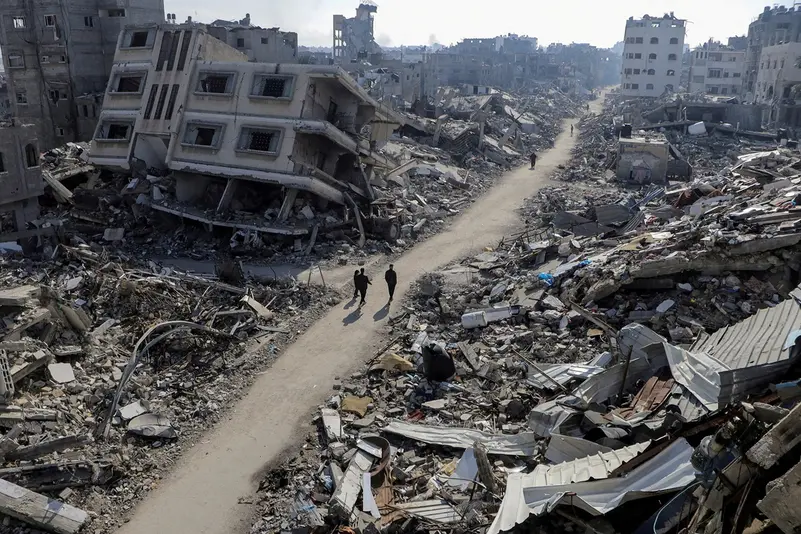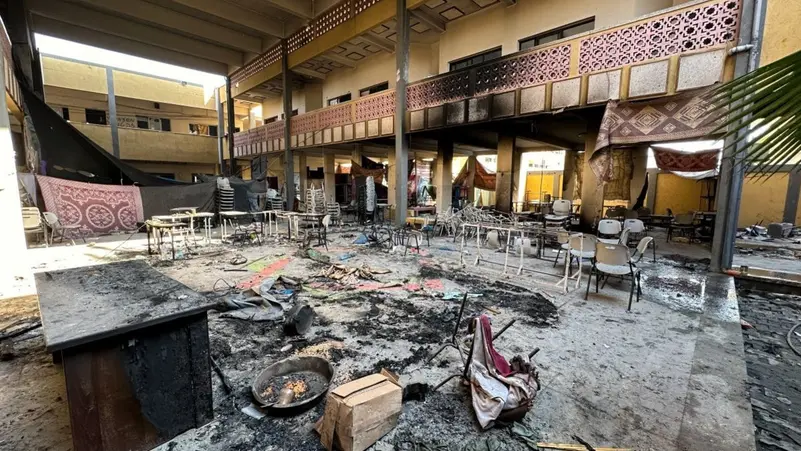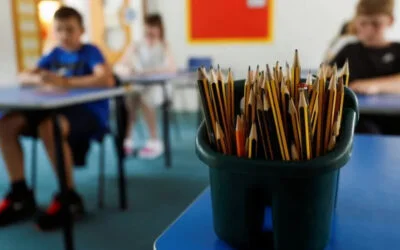Under siege: The struggle of education in Gaza
In Gaza, where conflict casts long shadows, stories like that of Fatima, a 12-year-old girl, emerge. Fatima’s life changed drastically when a strike destroyed her home and took her brother’s life. Her school, once a place of joy and learning, turned into a cramped makeshift shelter for many, only to be destroyed in another bombing, taking her remaining family members.
Amidst this loss, Fatima is resolved to continue her education. Yet, there is currently no education possible for children in Gaza. This deep-seated desire reflects not just her personal resilience but also underscores the critical role of education in conflict zones. It is no wonder that the Gaza Strip has one of the highest literacy rates globally at almost 97 percent – education’s power to instill hope and normalcy in the most challenging circumstances.
The non-adherence to the International Committee of the Red Cross (ICRC) Safe School Guidelines in Gaza had led to devastating outcomes. These guidelines, designed to safeguard education institutions during conflicts, when ignored, result in schools becoming targets rather than sanctuaries. Educational institutions offer a semblance of stability in impossible circumstances and a path toward rebuilding and healing.
The recent escalation of violence in the occupied Palestinian Territory has plunged the people of Gaza into yet another devastating cycle of destruction and propelled the Strip into a massive humanitarian crisis. In the past few months, the world has borne witness to an intensification of hostilities that, according to aid agencies like OXFAM UK, have only compounded the misery of those already in dire need of humanitarian assistance. The situation has significantly impacted the provision of basic services, including education. The magnitude of suffering is staggering, painting a somber picture of a community struggling to hold onto hope amidst relentless turmoil.
The continuous conflict in Gaza, described as unlivable by the UN for over a decade, has exacerbated the conditions for Palestinians. The destruction of infrastructure, including hundreds of schools, symbolizes not just physical loss but the erasure of educational opportunities for a generation. The hopelessness of the situation for young people like Fatima is palpable and escalating. Particularly alarming is the shutdown of Gaza’s only power plant, a consequence of fuel shortages. This closure has far-reaching implications, exacerbating an already critical situation. Essential water and sanitation systems lie in ruins, and vital public services have been disrupted. Amidst this devastation, the immediate humanitarian focus is on securing electricity, potable water, food, and necessities like soap is understandable. These are not just commodities but lifelines for those enduring the immediate, harrowing impact of this crisis.

Amidst this turmoil, emergency responders and humanitarian workers are tirelessly striving to ensure that the youngest victims, the innocent children caught in this maelstrom, survive and persevere. Yet, the prolonged conflict and displacement paint a grim picture, revealing a deeper, more poignant tragedy. These children are not just battling for survival today; they are being deprived of their rightful childhood and, with it, their future. Hundreds of schools, which should have been sanctuaries of learning and growth, now lay in ruins, a stark symbol of the stolen dreams and aspirations of an entire generation.
Like all children around the world, Palestinian children like 12-year-old Fatima are entitled to a life of safety, dignity, and stability, free from the shadows of violence and oppression. Essential to this right is access to education, a fundamental human need and a beacon of hope. In recognition, UNRWA oversaw 183 schools in Gaza at the outset of 2023, nurturing nearly 300,000 young minds. Tragically, at the time of writing this piece, the UN reported that over 50 of these UNRWA schools have been targets of attack. Additionally, 375 schools in the Gaza Strip have been damaged or destroyed, with 12 suffering complete destruction. It’s heart-wrenching to see educational sanctuaries, once havens of learning and growth, transformed into shelters amidst conflict. But the targeting of these institutions is not just heartbreaking—it’s an affront to the very essence of civilization and a stark reminder of the urgent need for protection and peace in the lives of these young learners.
The destruction of schools is a tragedy that transcends mere bricks and mortar; it’s an assault on our shared humanity and the future we envision for our children. When schools are targeted, it’s not just the infrastructure that crumbles but the dreams and aspirations of a generation. This highlights the urgent need for intervention and support that will positively impact these children’s lives. It is imperative to transform the outrage of the global community against the suffering of innocent children into action, ensuring the protection of education as a fundamental human right.
Having worked for refugee education and the empowerment of vulnerable youth through education, I recognize the unwavering courage and resilience of young girls like Fatima as an unspoken invitation for positive action. It challenges those who witness this reality to move beyond empathy and engage actively in support and drive meaningful change. It’s a call to uphold and protect the fundamental right to education.
We must confront a sobering reality: the danger of losing a generation in one of the world’s most literate places. A generation deprived of education is a generation stripped of its ability to dream. Fatima’s story is not an isolated tale of hardship; it’s a universal narrative about the enduring power of education and the human spirit.



